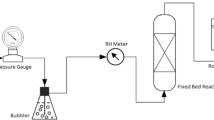Abstract
In this study, bottom ash sand was classified into sizes of 0.15 mm or less, 0.15∼0.6 mm, 0.6∼1.2 mm, 1.2∼2.5 mm, and 2.5∼5 mm by sand size. The results were evaluated with regard to fine dust removal. The bottom ash sand showed hysteresis in the adsorption and desorption of nitrogen gas, and the pore size was mostly over 100 nm as found by MIP measurement. As the size of bottom ash sand decreased from 0.6 mm, pore volume tended to increase. For this reason, when bottom ash sand is crushed to 0.6 mm or less, it is determined that the pore volume increases by converting closed pores into open pores. However, bottom ash sand of 0.6 mm or less is composed of pores of 10 μm or more, which are mostly used as fine dust passages, and thus the effect of removing fine dust is low. Bottom ash sand of 0.6 mm or more is composed of pores of 0.1 μm or more, which are considered to be effective in removing PM2.5 and PM10. In particular, the ratio of pores with sizes of 0.1∼2.5 μm, capable of removing PM2.5, is 56.1∼74.8%, which is expected to be effective at removing PM2.5.







Similar content being viewed by others
References
Y.R. Lee, J.T. Soe, S. Zhang, J.W. Ahn, M.B. Park, W.S. Ahn, Synthesis of nanoporous materials via recycling coal fly ash and other solid wastes: a mini review. Chem. Eng. J. 317, 821–843 (2017)
S.H. Yoon, S.J. Bae, Novel synthesis of nanoscale zerovalent iron from coal fly ash and its application in oxidative degradation of methyl orange by fenton reaction. J. Hazard. Mater. 365, 751–758 (2019)
J.H. Jeong, Y.S. Chu, C.K. Yi, S.K. Seo, D.Y. Kwon, A study on the manufacturing of energetically-modified reject fly ash and the characteristics of mortar. J. Korean Ceram. Soc. 53(2), 234–240 (2016)
S.B. Park, Y.I. Jang, J. Lee, B.J. Lee, An experimental study on the hazard assessment and mechanical properties of porous concrete utilizing coal bottom ash coarse aggregate in Korea. J. Hazard. Mater. 166(1), 348–355 (2009)
C.G. Arenas, M. Marrero, C. Leiva, J. Solís-Guzmán, L.F.V. Arenas, High fire resistance in blocks containing coal combustion fly ashes and bottom ash. Waste Manag. 31(8), 1783–1789 (2011)
M. Singh, R. Siddique, Effect of coal bottom ash as partial replacement of sand on properties of concrete. Resour. Conserv. Recy. 72, 20–32 (2013)
J.G. Jang, Y.B. Ahn, H. Souri, H.K. Lee, A novel eco-friendly porous concrete fabricated with coal ash and geopolymeric binder: heavy metal leaching characteristics and compressive strength. Constr. Build. Mater. 79, 173–181 (2015)
K.B. Jones, L.F. Ruppert, S.M. Swanson, Leaching of elements from bottom ash, economizer fly ash, and fly ash from two coal-fired power plants. Int. J. Coal. Geol. 94, 337–348 (2012)
L.B. Andrade, J.C. Rocha, M. Cheriaf, Influence of coal bottom ash as fine aggregate on fresh properties of concrete. Constr. Build. Mater. 23(2), 609–614 (2009)
P. Aggarwal, Y. Aggarwal, S.M. Gupta, Effect of bottom ash as replacement of fine aggregates in concrete. Asian J. Civ. Eng. 8(1), 49–62 (2007)
M. Singh, R. Siddique, Strength properties and micro-structural properties of concrete containing coal bottom ash as partial replacement of fine aggregate. Constr. Build. Mater. 50, 246–256 (2014)
K. Shi-Cong, P. Chi-Sun, Properties of concrete prepared with crushed fine stone, furnace bottom ash and fine recycled aggregate as fine aggregates. Constr. Build. Mater. 23(8), 2877–2886 (2009)
Y. Bai, F. Darcy, P.A.M. Basheer, Strength and drying shrinkage properties of concrete containing furnace bottom ash as fine aggregate. Constr. Build. Mater. 19(9), 691–697 (2005)
H.K. Kim, H.K. Lee, Use of power plant bottom ash as fine and coarse aggregates in high-strength concrete. Constr. Build. Mater. 25(2), 1115–1122 (2011)
H.K. Lee, H.K. Kim, E.A. Hwang, Utilization of power plant bottom ash as aggregates in fiber-reinforced cellular concrete. Waste Manag. 30(2), 274–284 (2010)
A. Zanoletti, F. Bilo, L. Borgese, L.E. Depero, A. Fahimi, J. Ponti, A. Valsesia, R.L. Spina, T. Montini, E. Bontempi, SUNSPACE, a porous material to reduce air particulate matter (PM). Front. Chem. 6, 534 (2018)
S. Lowell, J.E. Shields, M.A. Thomas, M. Thommes, Characterization of porous solids and powders : surface area pore size and density (Springer Science & Business Media, Berlin, 2012)
S. Lowell, J.E. Shields, Powder surface area and porosity (Springer Science & Business Media, Berlin, 2012)
K.K. Aligizaki, Pore structure of cement-based materials: testing Interpretation and Requirements (CRC Press, Boca Raton, 2005)
E.P. Barrett, L.G. Joyner, P.P. Halenda, The determination of pore volume and area distributions in porous substances. I. Computations from nitrogen isotherms. J. Am. Chem. Soc. 73(1), 373–380 (1951)
J.M. Thomas, W.J. Thomas, Principles and practice of heterogeneous catalysis (Wiley, Hoboken, 2014)
P.A. Webb, An introduction to the physical characterization of materials by mercury intrusion porosimetry with emphasis on reduction and presentation of experimental data. Micromeritics Instrument Corp. (2001)
KS C 9325, Air filter element for room air purifier, Korean Industrial Standards (2011)
B. Crittenden, W.J. Thomas, Adsorption technology and design (Elsevier, Amsterdam, 1998)
M. Thommes, K. Kaneko, A.V. Neimark, J.P. Olivier, F. Rodriguez-Reinoso, J. Rouquerol, K.S.W. Sing, Physisorption of gases, with special reference to the evaluation of surface area and pore size distribution (IUPAC Technical Report). Pure Appl. Chem. 87(9–10), 1051–1069 (2015)
Acknowledgements
This work was supported by the Korea Institute of Energy Technology Evaluation and Planning (KETEP) and the Ministry of Trade, Industry & Energy (MOTIE) of the Republic of Korea (No. 20181110200070).
Author information
Authors and Affiliations
Corresponding author
Additional information
Publisher's Note
Springer Nature remains neutral with regard to jurisdictional claims in published maps and institutional affiliations.
Rights and permissions
About this article
Cite this article
Lee, WJ., Lee, JS., Atarashi, D. et al. Pore structure and possibility of fine dust removal for bottom ash sand. J. Korean Ceram. Soc. 57, 378–384 (2020). https://doi.org/10.1007/s43207-020-00046-9
Received:
Revised:
Accepted:
Published:
Issue Date:
DOI: https://doi.org/10.1007/s43207-020-00046-9




